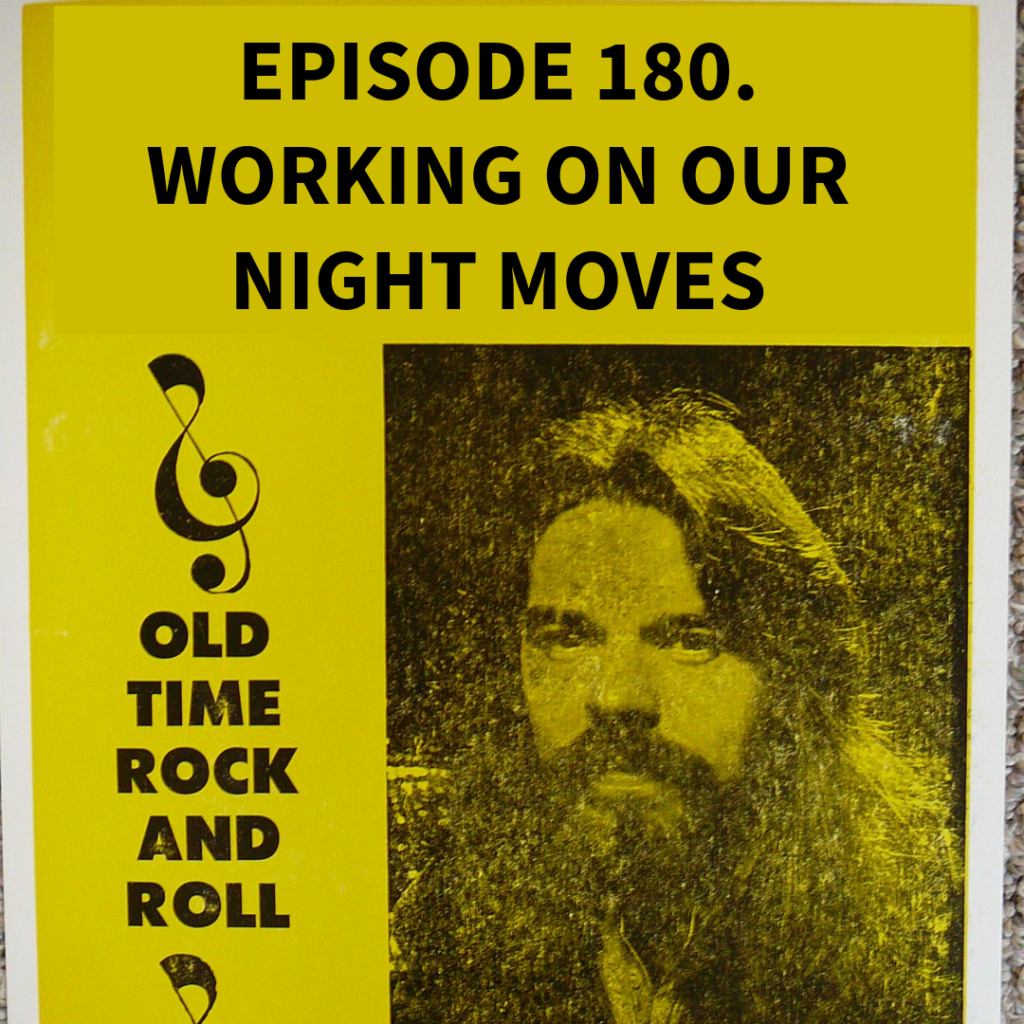INTELLECTUAL PROPERTY AND THE MUSIC INDUSTRY… AND BOB SEAGER
In Episode 180 of “The Marketing Madmen,” Nick Constantino and Trip Jobe kick off the show with a heated PSA about driving in snow, highlighting the frustrations of navigating icy roads in Atlanta. Despite the freezing weather, the hosts are live from the Battery and ready to dive into a fascinating discussion on intellectual property.
They are joined by Gar Hogan, a general partner at Tribute Management, who brings a wealth of experience from his previous career as an attorney specializing in trademark and intellectual property law. Gar shares his journey from aspiring musician to influential lawyer in the entertainment industry, shedding light on the critical role of intellectual property in music and beyond.
Nick, Trip, and Gar explore the complexities of the music industry, from songwriters and performers to the impact of streaming services. They discuss how the digital revolution has flipped the industry on its head and the importance of understanding branding and trademarks in today’s landscape. Gar emphasizes the need for education on intellectual property and how it shapes the entertainment world.
Gar shifts the focus to Bob Seger, detailing his rise from playing at youth clubs in Detroit to becoming a rock legend. Seger’s career was built on relentless touring and live performances, often in small, intimate venues. The episode concludes with insights into Seger’s songwriting evolution, his influence on the music industry, and his enduring legacy.
Finally, the conversation pivots to the topic of homelessness. Gar passionately explains the complexities of homelessness and the innovative solutions some cities are employing to address this pervasive issue. He highlights the significant burden on city budgets due to overcrowded jails and the high costs of emergency medical treatment for the unhoused population. Gar emphasizes that taking the criminal justice element out of homelessness and focusing on services is crucial.
Key Takeaways:
- The importance of intellectual property in the music industry.
- The impact of streaming services on traditional music promotion.
- Bob Seger’s rise to fame and songwriting evolution.
- The challenges posed by changing algorithms on digital platforms.
- The complexities and costs associated with homelessness.
- The effectiveness of programs like PAD (Policing Alternatives & Diversion)
Click here to be a guest in a future episode
Click here for our video collection
In this episode, Nick Constantino and Tripp Jobin kick off the show with a heated PSA about driving in snow, highlighting the frustrations of navigating icy roads in Atlanta. Despite the freezing weather, the hosts are live from the Battery and ready to dive into a fascinating discussion on intellectual property.
They are joined by Gar Hogan, a general partner at Tribute Management, who brings a wealth of experience from his previous career as an attorney specializing in trademark and intellectual property law. Gar shares his journey from aspiring musician to influential lawyer in the entertainment industry, shedding light on the critical role of intellectual property in music and beyond.
Nick, Tripp, and Gar explore the complexities of the music industry, from songwriters and performers to the impact of streaming services. They discuss how the digital revolution has flipped the industry on its head and the importance of understanding branding and trademarks in today’s landscape. Gar emphasizes the need for education on intellectual property and how it shapes the entertainment world.
Gar Hogan delves into the intricacies of the music industry from a legal standpoint, discussing the evolution from small venues and live events to the digital age dominated by streaming services like Spotify. He explains how the role of promoters has diminished and musicians now need to build direct relationships with their audiences, often handling their own marketing and event promotions.
Gar emphasizes the challenges faced by musicians in today’s industry, including the need to adapt to new technologies and platforms. He highlights the importance of intellectual property in protecting artists’ work and ensuring they receive fair compensation. The conversation explores how the shift to digital has created both opportunities and obstacles for musicians, from the potential to go viral on platforms like Spotify to the complexities of navigating contracts and royalties.
Nick, Tripp, and Gar discuss the enduring value of live performances and small venues, despite the industry’s focus on large-scale festivals and digital distribution. They reflect on the experiences of legendary musicians like Bob Seger and George Thorogood, who built their careers through relentless touring and intimate performances.
The episode concludes with insights into the future of the music industry, emphasizing the need for musicians to be versatile and tech-savvy. Gar shares his perspective on how artists can leverage digital tools while maintaining the authenticity and connection that comes from live performances.
Gar Hogan elaborates on the music industry’s future, emphasizing the dominance of attention as the world’s currency. Musicians need to align themselves with multinational corporations to leverage their reach and resources. He highlights the challenges posed by ever-changing algorithms on platforms like Spotify and YouTube, making it difficult for artists to achieve sustained success without adapting to the whims of these systems.
Nick and Tripp discuss the risk-reward dynamic in the music industry, noting that the cost and effort required to achieve fame have increased. They emphasize the importance of technical knowledge and strategic marketing to navigate the digital landscape. The conversation explores the potential backlash against the digital machine and a possible return to more organic, homegrown music movements.
Gar shifts the focus to Bob Seger, detailing his rise from playing at youth clubs in Detroit to becoming a rock legend. Seger’s career was built on relentless touring and live performances, often in small, intimate venues. His success culminated in the 1972 release of “Live Bullet,” recorded at Cobo Hall, which became one of the best-selling live rock albums of all time.
Nick, Tripp, and Gar discuss Seger’s influence on the music industry, his commitment to live performances, and his ability to cross musical genres. They reflect on Seger’s respect for earlier musicians and his willingness to cover songs, adding his unique spin to each performance.
The episode concludes with a look at Seger’s discography, highlighting key albums and tracks that have solidified his place in the canon of classic rock.
Gar Hogan elaborates on Bob Seger’s songwriting evolution, emphasizing how Seger transitioned from being a performer to a craftsman of powerful songs in the late 70s and 80s. Seger wrote songs that resonated deeply with audiences, capturing the journey from youthful exuberance to introspective reflection on life’s challenges and triumphs.
Nick, Tripp, and Gar discuss the honesty and vulnerability in Seger’s lyrics, contrasting it with the often superficial themes prevalent in modern music. They highlight how Seger’s music, rooted in the experiences of Detroit’s working class and the socio-political changes of the 70s, offered a raw and relatable narrative that connected with listeners on a profound level.
Gar shares insights into Seger’s authenticity, noting how his songs like “Main Street” and “Night Moves” drew from real-life experiences and places. This authenticity, combined with his ability to cross musical genres, contributed to Seger’s enduring popularity and influence.
The conversation explores how Seger successfully navigated the commercial aspect of the music industry without compromising his integrity. The discussion of Seger’s decision to license “Like a Rock” for Chevrolet truck commercials underscores his commitment to supporting his community of American auto workers.
Nick, Tripp, and Gar reflect on Seger’s legacy, noting his continued presence on the Billboard charts and the discovery of his music by new generations through platforms like Spotify. They emphasize how Seger’s music serves as an entry point for listeners to explore deeper, lesser-known tracks that reveal the breadth of his artistry.
Bob Seger’s music is a timeless journey through rock, blues, and Americana. With lyrics that resonate across generations, he captures the raw emotion of life’s highs and lows. Whether it’s the rebellious energy of “Night Moves” or the reflective depth of “Against the Wind,” Seger’s powerful voice and authentic storytelling connect on a deeply personal level. If you haven’t experienced his catalog, start now—you’ll find songs that echo your own experiences and inspire new ones. 🎸
Now, let’s pivot to the topic of homelessness and how we can address this critical issue. When we come back, we’ll explore some innovative strategies and initiatives making a difference in our communities. Stay tuned.
Gar Hogan passionately explains the complexities of homelessness and the innovative solutions some cities are employing to address this pervasive issue. He highlights the significant burden on city budgets due to overcrowded jails and the high costs of emergency medical treatment for the unhoused population. Gar emphasizes that taking the criminal justice element out of homelessness and focusing on services is crucial.
Nick, Tripp, and Gar discuss the importance of providing purpose and support to individuals experiencing homelessness. They highlight the work of organizations like PAD (Policing Alternatives & Diversion), which aim to offer services instead of jail cells. Gar underscores the effectiveness of programs that give police officers the authority to divert individuals to supportive services rather than arresting them for minor infractions.
The conversation shifts to the broader societal and economic impacts of homelessness, with Gar stressing the need for comprehensive approaches that address mental health and provide stable housing. They discuss the benefits of providing opportunities for individuals to gain stability and contribute to their communities.
The episode concludes with Gar encouraging listeners to support organizations working on innovative solutions to homelessness and providing information on how to get involved.





